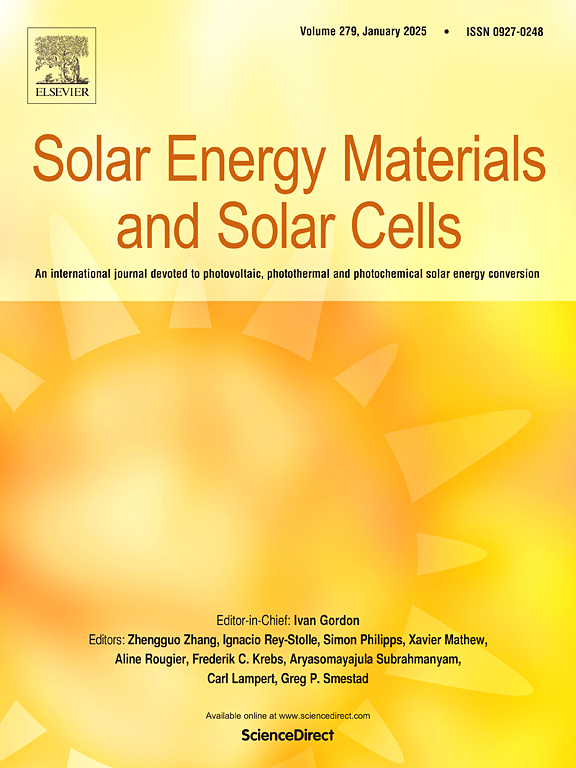Evaluation of parameters to characterize the aging of solar reflector materials
IF 6.3
2区 材料科学
Q2 ENERGY & FUELS
引用次数: 0
Abstract
The evaluation of the degradation of solar reflectors for concentrating solar thermal applications is of primary importance for material development and to guarantee the optimal optical quality of the solar field over an extended life time. Standardization of durability tests and their evaluation is very limited nowadays and an important ongoing task contributing to the reliability and feasibility of the technology. In this work, a series of long duration accelerated aging tests were used to test a set of different reflector materials, from commercial to experimental and low-cost materials, and by taking the durations to extreme levels never before conducted, assuring the appearance of considerable degradation. The most common degradation parameters were determined and a thorough evaluation of the tests, the parameters and their determination techniques was performed. The copper-accelerated acetic acid salt spray test was confirmed to be the quickest test to provoke degradation in most materials and this way offers the possibility to compare different candidates. Other tests provoke little degradation for most materials even after long durations. The development of corrosion spots is the first parameter to show differences for the materials. The specular reflectance is more sensitive to show degradation than the hemispherical reflecance. An overview table was created which allows to determine minimum test durations to select, depending on the parameter and test to be evaluated. This serves as an important tool for the planning of future tests and may help with the further standardization of testing and evaluation of the durability of solar reflectors.

求助全文
约1分钟内获得全文
求助全文
来源期刊

Solar Energy Materials and Solar Cells
工程技术-材料科学:综合
CiteScore
12.60
自引率
11.60%
发文量
513
审稿时长
47 days
期刊介绍:
Solar Energy Materials & Solar Cells is intended as a vehicle for the dissemination of research results on materials science and technology related to photovoltaic, photothermal and photoelectrochemical solar energy conversion. Materials science is taken in the broadest possible sense and encompasses physics, chemistry, optics, materials fabrication and analysis for all types of materials.
 求助内容:
求助内容: 应助结果提醒方式:
应助结果提醒方式:


